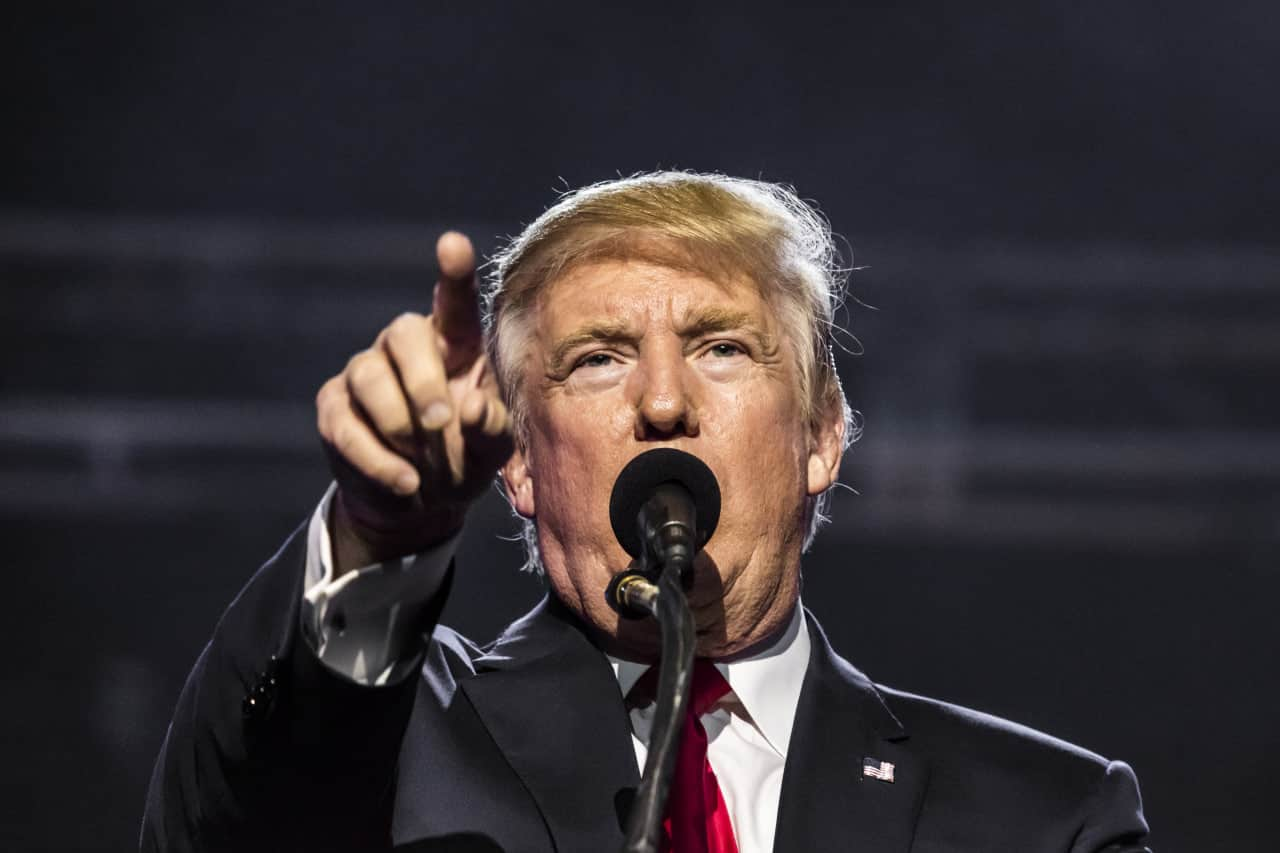
The coming of the Trump administration swiftly bore fruit for the cryptocurrency industry since, as it entered the white house, Gary Gensler exited the Securities and Exchange Commission (SEC), thus ending what many called ‘operation chokepoint 2.0’ and the ‘war on crypto.’ Still, more direct actions favoring digital assets have been scarce – though not non-existent – and such has been the case with the hoped-for strategic Bitcoin ( BTC ) reserve. Under the circumstances, Finbold elected to examine blockchain sources such as Arkham Intelligence to try and determine if the incumbent government has been buying cryptocurrencies behind the scenes. Is the Federal Government loading up on Bitcoin? As quickly became apparent from the available data , even if the Trump administration has been buying BTC, the quantities have been trivial . Indeed, Arkham Intelligence shows no noteworthy change in the total amount of cryptocurrency owned by the U.S. government. This, however, does not mean the already-existing reserve is negligible. Specifically, records show the Federal Government holds nearly 200,000 BTC at press time. U.S. top cryptocurrency holdings on January 20 and 30. Source: Arkham Many other cryptocurrencies are also in the hands of the administration, and – other than Bitcoin – the top holdings include Ethereum ( ETH ), BNB ( BNB ), the wrapped versions of the major coins and tokens , and a selection of stablecoins like USDC and USDT. In total, the value of government cryptocurrency stands at a substantial – but not staggering – $21 billion. The U.S. Government crypto trading activity revealed Though no substantial buying has occurred since January 20, it is worth pointing out that sections of the government, such as the Department of Justice (DoJ) and the Federal Bureau of Investigation (FBI), have not exercised their right to sell BTC seized from the Silk Road. Thanks to Bitcoin appreciating to its press time price of $101,436, their holdings have grown to nearly $7.3 billion in value. Silk Road Bitcoin balance on January 1 and 30. Source: Arkham Such trading activity – or rather, the lack thereof – indicates that the authorities are following the guidelines set by Trump when he promised not to sell any cryptocurrency found under Federal control. Featured image via Shutterstock The post Did the Trump administration quietly begin buying Bitcoin since inauguration? appeared first on Finbold .
Finbold
You can visit the page to read the article.
Source: Finbold
Disclaimer: The opinion expressed here is not investment advice – it is provided for informational purposes only. It does not necessarily reflect the opinion of BitMaden. Every investment and all trading involves risk, so you should always perform your own research prior to making decisions. We do not recommend investing money you cannot afford to lose.
Urgent Warning: Is the US Dollar Repeating its Explosive 2015-2017 Pattern?

Cryptocurrency investors are constantly scanning the horizon for signals, and one traditional market indicator is flashing a potentially significant warning: the US dollar. Could the greenback be on the verge of repeating a powerful pattern last seen between 2015 and 2017? If history rhymes, understanding this potential repeat could be crucial for navigating the choppy waters of the crypto market and beyond. Let’s dive into the details and explore what this historic echo might mean for your portfolio. Decoding the 2015-2017 US Dollar Pattern: What Happened? To understand the current situation, we must first revisit the 2015-2017 period. This era was marked by a significant strengthening of the US dollar . What were the key factors driving this surge? Federal Reserve Policy Divergence: The US Federal Reserve began to tighten its monetary policy, raising interest rates while other major central banks, like the European Central Bank (ECB) and the Bank of Japan (BOJ), maintained accommodative stances. This policy divergence made the dollar more attractive to investors seeking higher yields. Global Economic Conditions: While the US economy showed signs of recovery post-financial crisis, other parts of the world faced slower growth or even economic headwinds. This relative outperformance of the US economy further bolstered the dollar strength . Safe Haven Demand: Geopolitical uncertainties and market volatility often drive investors towards safe-haven assets like the US dollar. During periods of global concern, the dollar tends to appreciate as investors seek security and stability. The impact of this US dollar pattern was far-reaching, affecting global trade, emerging markets, and commodity prices. A stronger dollar made imports cheaper for the US but exports more expensive, and it often put pressure on emerging market economies that held dollar-denominated debt. Is History Rhyming? Parallels Between Then and Now Fast forward to the present day, and we see some striking similarities to the 2015-2017 setup. Are we indeed witnessing a repeat of this US dollar pattern ? Aggressive Federal Reserve Rate Hikes: Just like in 2015-2017, the Federal Reserve is currently engaged in a series of aggressive interest rate hikes to combat inflation. Inflation is significantly higher now than it was then, potentially leading to an even more hawkish Fed stance. Global Economic Slowdown Fears: Concerns about a global economic slowdown are mounting. Many regions are grappling with high inflation, energy crises, and geopolitical instability, while the US economy, despite inflation, still shows relative resilience. Elevated Geopolitical Risks: The world stage is fraught with geopolitical tensions, including the ongoing conflict in Ukraine and rising global uncertainties. These factors contribute to risk aversion and could drive investors towards the perceived safety of the US dollar. These parallels suggest that the conditions are ripe for a potential repeat of the 2015-2017 dollar strength scenario. However, it’s crucial to acknowledge the differences too. Key Differences: Why This Time Might Be Different (Or Not) While the similarities are compelling, several factors differentiate the current environment from 2015-2017. These differences could influence whether the US dollar pattern truly repeats itself or takes a different course: Factor 2015-2017 Current Situation Inflation Levels Relatively Low Significantly Higher Global Growth Moderate, Uneven Slowing, Recession Risks Central Bank Coordination Divergent Policies Some Convergence (Global Inflation Fight) but still divergence Geopolitical Landscape Elevated, but different nature Highly volatile, multi-faceted risks The higher inflation environment today could necessitate a more aggressive and prolonged tightening cycle by the Federal Reserve compared to 2015-2017. This could potentially lead to even greater dollar strength . However, a more pronounced global economic slowdown could also eventually limit the dollar’s upside as risk aversion becomes the dominant market theme. Impact on Forex Trends and Cryptocurrency Markets What does a potentially repeating 2015-2017 US dollar pattern mean for forex trends and, more specifically, the cryptocurrency market? Forex Market Implications: Continued Dollar Dominance: A repeat pattern would likely reinforce the US dollar’s dominance in the forex trends . Pairs like EUR/USD, GBP/USD, and AUD/USD could experience further downside pressure. Emerging Market Currencies Under Pressure: Emerging market currencies could face significant headwinds as capital flows towards the higher-yielding and safer US dollar. This could trigger currency crises in vulnerable economies. Carry Trade Dynamics: The attractiveness of carry trades involving the US dollar would likely increase. Investors may borrow in low-yielding currencies to invest in dollar-denominated assets, further boosting dollar strength . Cryptocurrency Market Implications: Potential Negative Correlation: Historically, there has been an observed, albeit not always consistent, negative correlation between the US dollar and cryptocurrencies like Bitcoin. A stronger dollar could exert downward pressure on crypto prices. Risk-Off Sentiment: A surging dollar often reflects a broader risk-off sentiment in financial markets. In such environments, riskier assets like cryptocurrencies tend to underperform as investors seek safety in traditional assets. Dollar-Denominated Crypto Pairs: For traders primarily using USD-denominated crypto pairs, a stronger dollar might make buying crypto relatively more expensive, potentially reducing demand. Actionable Insights: Navigating a Potentially Stronger Dollar If you believe the US dollar pattern of 2015-2017 is indeed repeating, what actionable steps can you take? Diversify Your Portfolio: Don’t put all your eggs in one basket. Diversify across different asset classes, including those that may perform well in a strong dollar environment, and those that might offer a hedge against it. Monitor Federal Reserve Actions: Pay close attention to the Federal Reserve’s communications and policy decisions. Their actions will be a primary driver of dollar strength . Stay Informed About Global Economic Conditions: Keep abreast of global economic developments and geopolitical events. These factors can significantly influence currency markets. Consider Dollar-Cost Averaging: In volatile markets, dollar-cost averaging can be a prudent strategy for crypto investments. It helps to mitigate the risk of buying at market tops. Hedge with Dollar-Neutral Strategies: Explore strategies that are less dependent on the direction of the US dollar, such as trading crypto pairs against other currencies or using stablecoins pegged to currencies other than the USD. Conclusion: Prepare for Potential Dollar Dominance The echoes of the 2015-2017 US dollar pattern are becoming increasingly hard to ignore. While history doesn’t always repeat perfectly, the similarities in the current macroeconomic and geopolitical landscape are striking. A strong dollar environment can have significant implications across financial markets, including forex trends and the cryptocurrency space. By understanding the potential for a repeat pattern and taking proactive steps to manage risk, investors can better navigate the market dynamics ahead. The key is to stay informed, remain adaptable, and be prepared for a world where the dollar once again reigns supreme. To learn more about the latest Forex market trends, explore our article on key developments shaping US Dollar strength. Finbold

Decoding Rand Resilience: South Africa Awaits Pivotal Budget Speech
In the ever-turbulent world of cryptocurrency and global finance, keeping an eye on traditional markets and macroeconomic events is just as crucial as tracking Bitcoin’s next halving. Right now, all eyes are on South Africa as the nation braces itself for the much-anticipated budget speech. But amidst the usual pre-speech jitters, there’s a surprising element of calm – the South African Rand appears to be holding its ground. What does this steadiness mean, and more importantly, what can we expect once the Finance Minister takes to the podium? Let’s dive into the factors at play and decode what this budget speech could mean for the Rand and the wider economic landscape. Decoding Rand Stability Amidst Budget Speech Anticipation Before we delve into future projections, let’s acknowledge the present. The Rand Stability observed in the lead-up to the budget speech is noteworthy. In a climate often characterized by volatility, especially in emerging markets, this steadiness offers a moment of pause. But why is the Rand showing such resilience? Several factors could be contributing: Global Commodity Prices: South Africa, being a significant exporter of commodities, benefits from favorable global prices. Strong commodity demand can bolster the Rand. Cautious Optimism: Perhaps the market is already pricing in expectations from the budget speech, or there’s a sense of cautious optimism about the government’s fiscal approach. Carry Trade Appeal: The Rand, with its relatively higher interest rates, can be attractive for carry trades, providing some level of support. However, it’s crucial to remember that this steadiness could be the calm before the storm. Budget speeches are pivotal moments that can trigger significant market reactions. The real test for the Rand’s resilience will come after the details of the budget are unveiled. Why South Africa Budget Matters Profoundly for the Rand The annual South Africa Budget speech is more than just a financial statement; it’s a roadmap of the government’s economic priorities and fiscal health. For the Rand, the budget speech is a critical event because it directly impacts investor sentiment and confidence. Here’s why it carries such weight: Fiscal Policy Signals: The budget outlines the government’s spending and revenue plans. Prudent fiscal policy, aimed at reducing debt and deficits, is generally Rand-positive. Conversely, expansionary spending without clear funding strategies can weaken the currency. Debt Management: South Africa’s debt levels are a key concern for investors and ratings agencies. The budget’s approach to managing and potentially reducing this debt burden is closely scrutinized. Credible debt management plans can strengthen the Rand. Economic Growth Projections: The budget speech includes the government’s economic growth forecasts. Ambitious yet realistic growth targets, coupled with policies to stimulate the economy, can boost investor confidence and support the Rand. Policy Reforms: Often, budget speeches are used to announce or reaffirm key policy reforms aimed at improving the investment climate, addressing structural issues, and fostering sustainable growth. These reforms can have a significant long-term impact on the Rand’s trajectory. In essence, the budget speech provides a clear indication of the government’s commitment to fiscal discipline and economic reform – factors that are paramount for currency strength. Key Areas to Watch in the Budget Speech for Accurate Rand Forecasts For those looking to make informed Rand Forecasts , either for trading, investment, or simply understanding the macroeconomic environment, several key areas within the budget speech deserve close attention. These indicators will be crucial in determining the Rand’s direction post-speech: Area of Focus Positive Signal for Rand Negative Signal for Rand Fiscal Deficit Targets Lower deficit targets, credible plans to reduce borrowing. Higher deficit targets, increased borrowing, lack of fiscal consolidation. Debt-to-GDP Ratio Projections Projections showing a declining or stabilizing debt-to-GDP ratio. Projections indicating a rising debt-to-GDP ratio, unsustainable debt trajectory. Economic Growth Forecasts Realistic and moderately optimistic growth forecasts, supported by concrete policy measures. Overly optimistic or pessimistic growth forecasts without clear strategies for achievement. Structural Reforms Announcements of significant, market-friendly structural reforms (e.g., energy sector liberalization, SOE restructuring). Lack of commitment to meaningful reforms, continued reliance on unsustainable policies. Revenue Measures Sustainable and growth-friendly revenue measures, broadening the tax base without stifling economic activity. Tax increases that could dampen economic growth, reliance on unsustainable revenue sources. By carefully analyzing these areas, one can gain a more nuanced understanding of the budget’s implications for the Rand and make more informed predictions. Understanding the Budget Speech Impact on South African Rand: Potential Scenarios The Budget Speech Impact on the South African Rand can manifest in various ways, depending on how the market interprets the announcements. Let’s consider a few potential scenarios: Scenario 1: Market-Friendly Budget (Rand Positive) Characteristics: Budget demonstrates fiscal prudence, credible debt management, commitment to structural reforms, and realistic growth forecasts. Rand Reaction: Likely to strengthen against major currencies. Potential for significant gains if the budget exceeds market expectations. Investor confidence increases, leading to capital inflows. Scenario 2: Neutral Budget (Limited Rand Impact) Characteristics: Budget largely meets market expectations, with no major surprises in either direction. Fiscal stance is broadly in line with previous trends. Rand Reaction: Limited immediate reaction. May see some short-term volatility but likely to settle back to pre-budget levels. Market participants await further economic data and global cues. Scenario 3: Market-Unfriendly Budget (Rand Negative) Characteristics: Budget reveals weaker fiscal discipline, higher-than-expected deficits, lack of commitment to reforms, or overly optimistic (unrealistic) growth projections. Rand Reaction: Likely to weaken, potentially significantly. Investor confidence erodes, leading to capital outflows. Risk of ratings downgrades increases, further pressuring the Rand. It’s important to note that global factors and broader market sentiment will also play a role in shaping the Rand’s response to the budget speech. However, the budget’s content will be a primary driver of the currency’s direction in the immediate aftermath. Navigating Potential Rand Volatility: Actionable Insights for Investors Regardless of the budget outcome, some degree of Rand Volatility is almost guaranteed in the short term. For investors, whether in traditional assets or cryptocurrencies with exposure to emerging markets, understanding how to navigate this volatility is key. Here are some actionable insights: Stay Informed: Keep a close watch on post-budget analysis from reputable financial institutions and news sources. Understand the market’s interpretation of the budget details. Diversification: Diversification remains a golden rule. Don’t overexpose your portfolio to any single currency or market, especially during periods of heightened uncertainty. Risk Management: Employ appropriate risk management strategies. If trading the Rand or ZAR-denominated assets, consider using stop-loss orders to limit potential downside. Long-Term Perspective: For long-term investors, focus on the underlying fundamentals of the South African economy and the government’s commitment to sustainable reforms, rather than just short-term currency fluctuations. Seek Professional Advice: If you are unsure about how the budget speech might impact your investments, consult with a qualified financial advisor who can provide personalized guidance. The budget speech is a critical juncture for the South African economy and the Rand. While the currency currently displays resilience, the true test lies in the details of the budget and the market’s reaction. By understanding the key areas to watch and potential scenarios, investors can better prepare for the likely volatility and position themselves to navigate the post-budget landscape effectively. To learn more about the latest Forex market trends, explore our article on key developments shaping currency liquidity and global economic indicators. Finbold











